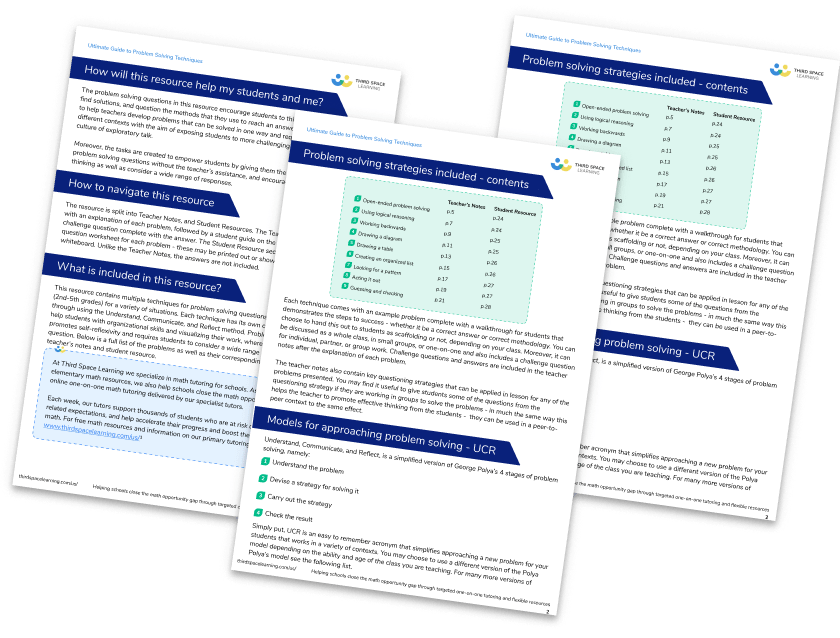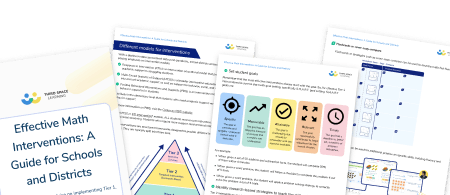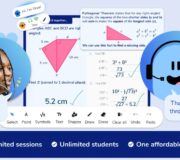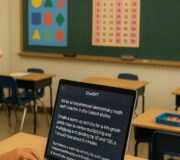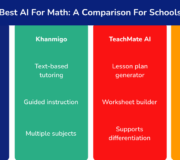Teaching Strategies For Supporting Children With ADHD In The Classroom
How do we manage ADHD in the classroom? What are the best ADHD teaching strategies? What even is ADHD? These are questions teachers with students with ADHD may often ask. Understanding how ADHD affects children and their learning is crucial for developing effective ADHD classroom strategies and harnessing the best in your student with ADHD.
What is ADHD?
ADHD is Attention Deficit Hyperactivity Disorder. For so many years the condition was associated with ‘naughty children.’ Thankfully, our understanding of ADHD has evolved.
Previously thought of as a mental disorder or learning disability, we now understand that ADHD is just a difference in the way the brain functions, particularly in regards to the way it processes dopamine.
In turn, this affects the ability to focus, think things through, manage sensory input and emotions, and it can affect classroom behavior.
There are three types of ADHD. Predominantly inattentive, predominantly hyperactive, and combined. Students with ADHD mostly have poor executive functioning.
This is the difficulty with the brains’ functions of planning, predicting, working memory, focus, using eye-contact for attention, time management, assessing progress, and finishing something while persevering through frustrations and boredom.
High Impact Tutoring Guide for Schools
How to choose, plan and fund the right tutoring approach for your students for maximum impact in your school.
Download Free Now!
Predominantly inattentive ADHD in children
Inattentiveness is more likely to be caused by TOO MUCH attention than by not enough. It can be like trying to pick one channel to watch when you have a bank of 50 screens in front of you.
For children with predominantly inattentive ADHD, sitting in a classroom environment is hard work because the brain is attuned to everything going on all around them which then makes focusing on one thing more difficult.
We see a child with a very short attention span who fidgets, blurts things out (before they lose the thought in their head) or seems to be doing anything but sitting still and paying attention, which can make classroom management challenging.
Students with predominantly inattentive ADHD are also able to hyperfocus if there is something they are really interested in, or they are having a good behavior day. With the right teaching methods this is something you can harness in a child with ADHD in the classroom.
Predominantly hyperactive ADHD in children
Hyperactivity starts in the brain. A child with ADHD could have sensory differences that affect their ability to sit still. The child may be fidgety and always on the move, show symptoms of inattention, and can be quite clumsy.
Some children with ADHD are very good at sports and seem well coordinated but hate writing and struggle with fine motor skills. For some children with predominantly hyperactive ADHD, the physical struggle to sit still and pay attention can be exhausting.
In this case, the messages between the brain and the body, particularly muscles and joints, are sometimes not strong enough. The brain can’t assess that the body is safe and secure and so seeks more and stronger signals – hence the brain says, ‘move it’, and the body responds.
A child with ADHD fidgeting in their seat is not ‘messing about’; they just have unique needs as they are trying to regulate their sensory feedback. This is why movement, exercise and active learning are so helpful for students with ADHD.
Children with combined inattentive and hyperactive ADHD will display a mixture of these mannerisms.

Meet Skye, the voice-based AI tutor making math success possible for every student.
Built by teachers and math experts, Skye uses the same pedagogy, curriculum and lesson structure as our traditional tutoring.
But, with more flexibility and a low cost, schools can scale online math tutoring to support every student who needs it.
Find out more
Characteristics and symptoms of ADHD in the classroom
ADHD can manifest itself differently in different children. However, impulsivity and self-esteem related characteristics are common among children with ADHD and are important to understand in that context.
Impulsivity
Impulsivity in children with ADHD is driven by the lack of dopamine. The brain is seeking that dopamine rush through novelty and reactions. This is why a student with ADHD might seem to be goading others or doing things they know cause a big reaction.
Some will be a class clown, because the laughter received stimulates a feel-good response they might not experience from boring or mundane tasks like the ones you ask them to do in the lesson.
Boredom is a huge issue for students with ADHD as they need something that sparks that dopamine connection and most of the activities in lessons do not do that.
Students with ADHD can be impulsive and not think through the consequences. This can lead to great frustration for the child’s teachers and parents, but try to think of it as ‘can’t rather than won’t’.
No matter how many times you sanction them or keep them in at playtimes, a few minutes later they are doing it again. Self-control can be learned but it takes a long time and some special support to develop this skill.
Self-esteem and mental health for children with ADHD
Many students with ADHD have poor self-esteem. The rejection sensitivity builds up when they receive many more negative comments from parents and teachers.
Constantly hearing ‘no’, ‘stop that’, ‘pay attention’, ‘you are not listening’, ‘you can do it if you try’ (and sometimes ‘you’re useless’, ‘you’re dumb’ and worse) means that some have such a poor view of themselves that they can switch off from education all together, thinking, “What is the point if that is what everyone thinks of me?”
A survey by ADDITUDE Magazine found that by the time they were 12, students with ADHD had heard 20,000 more negative comments about themselves than typical children. No surprise, children with ADHD can be highly sensitive to emotions.
A lifetime of being told to ‘man up’ or ‘stop being so over-sensitive’ means they may do all they can to avoid big emotional situations and can resort to lying, just to avoid that negative feedback or confrontation.
Others may seem to be causing the confrontation when often they are seeking help to co-regulate but instead of help, they get more trouble and rejection.
Research shows the high levels of students with ADHD being permanently excluded from schools, attending PRUs or leaving education early. The risks of being in the criminal justice system are higher as well, with an estimated 25% of the prison population meeting the diagnostic criteria for ADHD.
The risk of poor mental health is also greater. At the same time there are increasing numbers of entrepreneurs and business leaders with ADHD, discussing how it has helped them in their careers.
ADHD teaching strategies to make a difference
Teachers and teaching staff have the potential to make a huge difference when they support students with ADHD and teachers can make a big impact in the life of a student with ADHD.
Positive relationships are so important for these students, especially those who have got used to other adults writing them off. A student with ADHD needs adults who believe in them and can guide them through the challenges they face.
Behavior is the symptom, not the cause. When a student with ADHD has challenging behavior, take the time to step back and assess the situation more thoroughly.
Are they struggling with executive functions, their sensory systems, are there too many distractions, is the work clear to them, did they miss some important information, is what you asked them to do boring? What classroom accommodations can be made?
Be curious and you will start to understand your student with ADHD. Giving them some clear support and encouragement can start to build that positive relationship and help them trust you enough to work hard for you.
ADHD medication
The most common medication given to students with ADHD is a stimulant. It stimulates the connections in the brain to make them more secure and therefore enables the student to focus for longer. If the dosage and type is right, then it can have a huge effect on the child’s education.
It doesn’t suit everyone and does wear off as the school day goes through. Medication is not a cure for ADHD and we must be careful not to blame the child for poor concentration once the medication has left their system.
The key is to track the effects of the medication and adjust your support accordingly. One way to do that is to set a specific goal to achieve while the medication is working, finishing a piece of work for example.
Then record it and you will have some useful data for the child’s parents, doctors, and yourself to track the effectiveness of the medication as it is regularly reviewed.
Not all students with ADHD will take medication and the NICE guidelines state that even when medication is used, good ADHD teaching strategies, mentoring, and therapy are just as important to support someone with ADHD.
Managing ADHD in the classroom
ADHD classroom strategies, such as altering the environment to minimize distractions, can be effective. Taking down some of the posters and clutter around the classroom can help all children focus better.
Imagine yourself trying to do an exam in the middle of a disco with the lights, music, and people dancing all around you; that can be what a classroom feels like to a student with ADHD.
As well as taking away some distractions, some students with ADHD will benefit from privacy screens which can be put up or down to help shut out any further distractions. This simple classroom intervention can help keep children on task.
Where they sit in the classroom can also be important. In addition to considering who is their neighbor, think about how clear their line of sight is to where they need to focus most (usually the whiteboard).
Also think about sound, light, and movement around the class. Can the student with ADHD sit where it is the calmest place?
Keep the space around your whiteboard clear and plain. Posters with words, numbers, and other information that you have on the walls for reminders could be put in a folder on each table and the children taught to find the right pages for their prompts each lesson.
Often things that help the ADHD child can help the whole class.
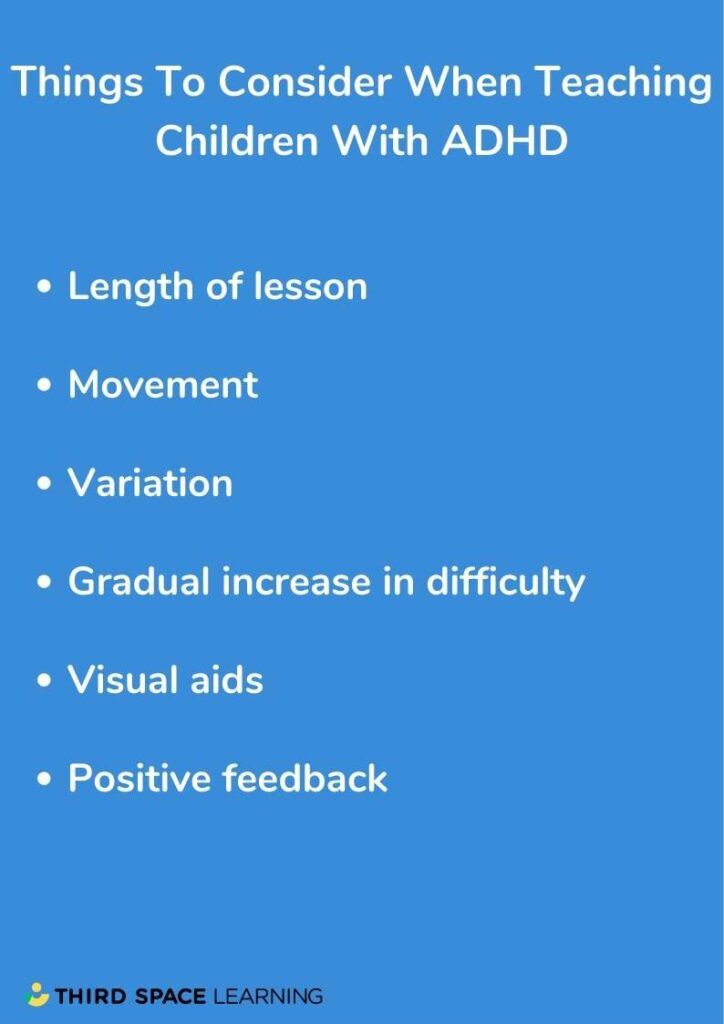
How to adapt your class work for a child with ADHD
Breaking up lessons
Consider how you teach. Splitting your lesson into clear sections or chunks with a short task connected to each can help a student with ADHD keep their focus as you are working with, not against their attention span.
Other students are not harmed by this approach. It gives you a chance to have shorter and more engaging activities with clear expectations. You can include quizzes, worksheets, practical activities, mind mapping and structured conversations or discussions.
Gradual increases in difficulty
Students with ADHD need to experience success and will soon give up if they think they can’t finish or will get something wrong, so build up the difficulty slowly and give them positive and specific feedback.
Variation in tasks
Consider different ways of recording work such as using a computer to type work, or speech to text software (Word now has a dictate function which needs a quiet space and internet access to work properly), mind maps, power points and close sentences.
Particularly avoid copying off the board. When you can, give them a copy of the text and a highlighter to work out what the key ideas in the text are.
See also: Differentiation in Teaching
Praise and positive feedback
Students with ADHD need feedback, particularly a lot of constructive and positive feedback. They can find it difficult to assess when they have done something right and may constantly ask you.
This seeking of feedback can seem to take up all your time so one thing you can do is write a list of skills you are looking for in a task.
For example:
1. Thinking of 3 good words for …
2. Persevering to get through the first three questions,
3. Thinking first before you ask for help. Take 5 seconds and read it again.
Simple and structured praise can develop the students’ understanding of learning.
Visual aids
Students with ADHD can really benefit from visual aids – as reminders, planners, and something to check and tick off as they go through a task. Reward systems such as reward charts can be useful as a visual aid of their progress, but the goals must be achievable.
The rewards need to be at least daily, rather than demand that they be good or controlled all week to achieve an end of week reward.
If the rewards are not obtainable and, for example, they lose a few points by Wednesday, then there is no incentive to keep going for the rest of the week. In this case, the child can feel as if they have failed again. They need to achieve success, as success builds success and self-esteem, too.
This is not giving rewards for the sake of it, they must be earned, but start gently and let them experience the pride of success some days at least. Similarly keep classroom rules short and simple and comment on when they get it right. Try to redirect rather than correct.
Incorporating movement to help students with ADHD in the classroom
Regular movement breaks can help those who fidget by giving their brains the extra stimulus it needs. Fidget toys can also be helpful, though used with some clear rules.
Many students with ADHD find that these toys help them focus and listen for longer, but talk with the child and set the expectations and boundaries together.
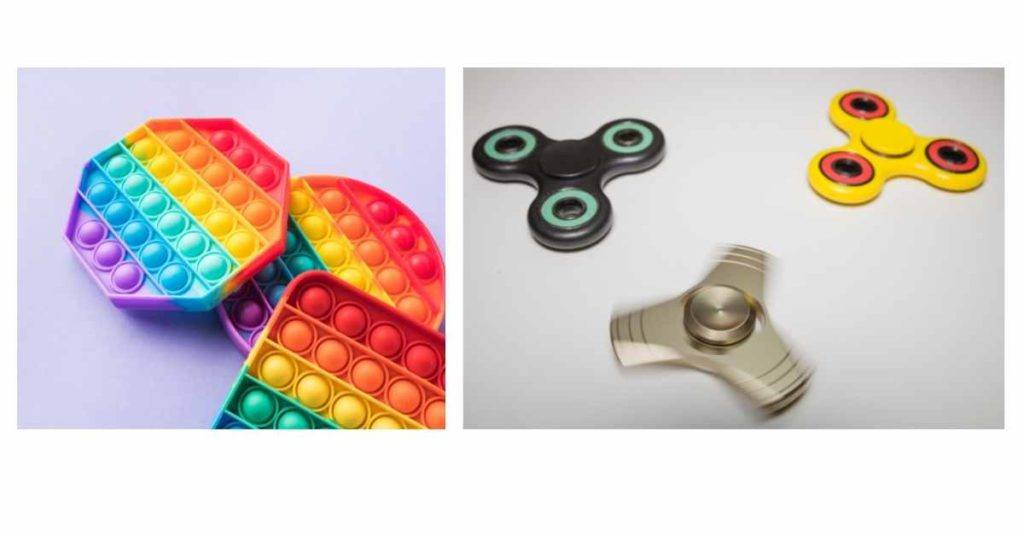
Any kind of physical activity; lifting and carrying things, taking a message to the office, a kick about outside when the playground is quiet, or doing a sensory circuit should be part of their daily routine and clearly communicated when they will happen.
Mentoring students with ADHD
Special education academic interventions can be used to plug the learning gaps for students with ADHD. Goal setting and monitoring their achievements are important parts of interventions for students with ADHD.
Third Space Learning’s online interventions can be specifically tailored for students with ADHD. Skye, the AI tutor, sets goals for each lesson and awards students with ‘stickers’ when these goals are achieved, giving children with ADHD the praise and positive feedback they need.

Furthermore, the set up of the online interventions can benefit students with ADHD. Headphones block out auditory distractions allowing the student to focus solely on the voice of the one-to-one AI tutor and the computer screen can keep their visual attention.
All of this, combined with simplified, visual instructions and worked examples help to make Third Space Learning’s online one-to-one interventions effective for students with ADHD.
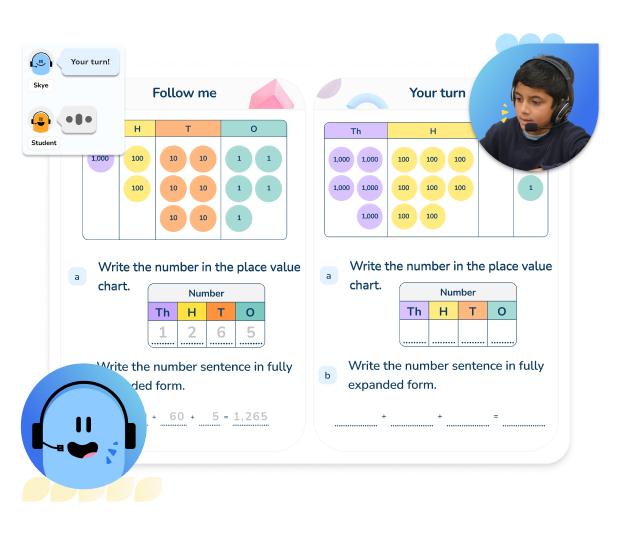
Extra help can also be given through a key member of staff, who discusses with the child their daily or weekly goals and how to achieve them, pointing out the skills they are developing such as perseverance, and supporting their executive function skills (getting organized), can have a very positive effect on all their school work.
Adapting homework, tests, and exams for students with ADHD
Students with ADHD benefit from shorter homework assignments. Think quality rather than quantity. A good idea could be to set a list of tasks for the term and let students choose one each week, with plenty of variety that enables them to research, investigate and share what they learn.
Speak to parents about how to plan and structure doing homework. We often suggest setting up a small booth-like place in a quiet room, like a workstation that can be taken down when not being used.
In school, extra time for tests and exams should be considered and a quiet room where they can think aloud may also be beneficial for many.
Typically, ADHD students don’t do as well on tests and exams as their academic ability might predict, because the sustained concentration, executive functioning and lack of being able to move for so long can severely impair their ability to perform.
Helping students with ADHD build social skills
Students with ADHD may need support to develop social skills. Often they can be over enthusiastic or get into conflict with others and can find it hard to concentrate for long enough to sustain a social interaction.
Other children can see them as someone to avoid and sometimes see them as someone who is easy to blame when there is trouble. Some who try to mask their ADHD may seem very shy and alone, not sure how to join in and make friends.
Structured support through clubs and activities can work well. If you have given them a mentor, the mentor can work with the group of students to support cooperation, manage conflict, think about why they love being friends and understand each other.
There are many schemes out there that can support this and one we have developed is called ‘Social Detectives’ that uses board and card games, conversation skills and social reading skills to help all children understand how to be friends, whatever their differences.
Teaching children with ADHD
Teaching students with ADHD can be very rewarding. Being the one who sets a spark of self-belief, harnesses their enthusiasm for novelty and builds a positive relationship with them is going to be hugely influential on their whole life.
When others knock them down, you can be the one to build them up. You will laugh and sometimes you might be frustrated, but they deserve your understanding and help, even before they get an ADHD diagnosis, which can take years.
As the SEND (Special Educational Needs and Disabilities) Code of Practice (2014) says, “Every teacher is a teacher of SEND”.
As teachers, we have the opportunity to release their potential. And what potential there is. Students with ADHD can be some of the most creative, expressive, funny and loyal students.
They can excel at problem solving, be eager to take on new and competitive challenges, be empathetic, inventive, optimistic, authentic, and have the potential to change the world.
Read more:
- How To Support A Child With Autism In The Classroom
- Autism Math
- Dyscalculia In Schools: A Guide To Identifying And Supporting Students
Do you have students who need extra support in math?
Skye—our AI math tutor built by experienced teachers—provides students with personalized one-on-one, spoken instruction that helps them master concepts, close skill gaps, and gain confidence.
Since 2013, we’ve delivered over 2 million hours of math lessons to more than 170,000 students, guiding them toward higher math achievement.
Discover how our AI math tutoring can boost student success, or see how our math programs can support your school’s goals:
– 3rd grade tutoring
– 4th grade tutoring
– 5th grade tutoring
– 6th grade tutoring
– 7th grade tutoring
– 8th grade tutoring
The content in this article was originally written by ADHD specialist teachers Sarah Loveridge and Lynn McCann and has since been revised and adapted for US schools by elementary math teacher Katie Keeton.
